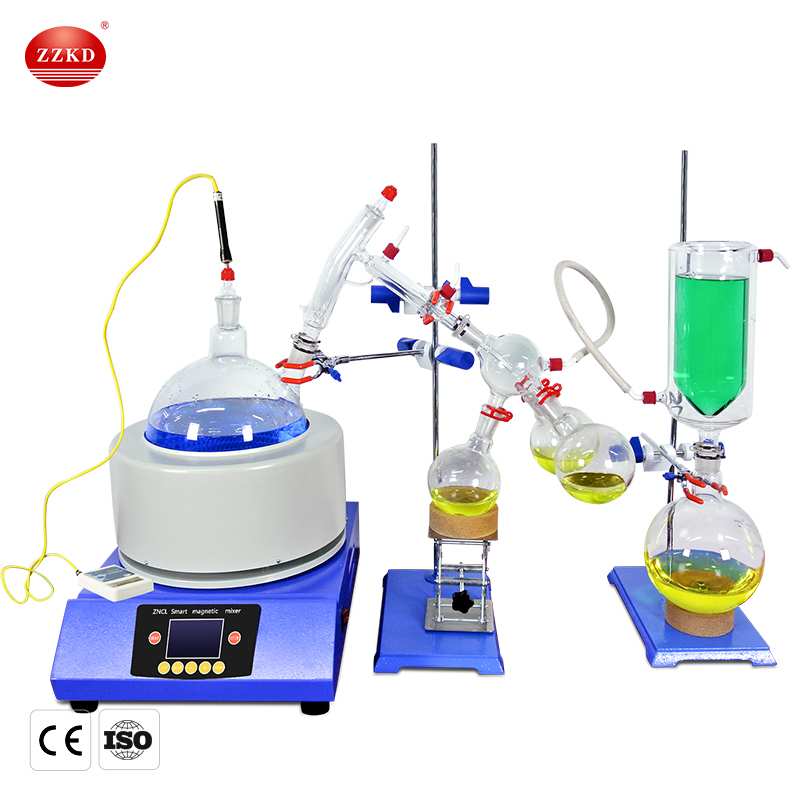What does short path distillation do?
Distillation is a technique for separating chemicals based on their physical characteristics such as melting point, boiling temperature, crystallization, and so on.
The use of boiling points is one of the most popular methods of distillation. Short-Path Distillation is used to separate heat-sensitive molecules from one another when the compounds' molecules are heat-sensitive.
Short path ditilation unit ability to separate components is used to separate various compounds. As a consequence, you have a high-purity, high-quality concentrate that you may sell on its own or use to make a number of other goods.

What is short path distillation?
Short path distillation, also known as fractional distillation, provides high-quality distillate, however it is limited in terms of scalability and capacity. The crude oil is heated in a boiling flask and stirred with a magnetic stirrer during the short-path process.
Heat is used to separate the components in the substrate until vaporization occurs. A condensing coil chills the vaporized chemicals back to a liquid.
At different temperature stages throughout the distillation process, substrate molecules are separated into three distinct "fractions". As the temperature rises, a new compound fraction evaporates, condenses, and is then transferred to a receiving flask.
What does short path distillation do?
Short-path distillation is a modest purification process that is suited for laboratory applications when space is limited. This low-pressure method separates condensate media across a few millimeters using numerous flasks and relatively brief extraction feeds.
To attain the required purity levels for application-specific needs, traditional distillation processes may necessitate substantially bigger equipment. Meanwhile, combining several components in a smaller working space, short-path distillation may reach distillate purity levels of up to 99 percent.

How do you run a short path distillation?
A liquid solution or emulsion is suspended in an evaporating flask and linked to a condenser or chilling device through a short feed in a short-path distillation configuration.
The evaporating flask is positioned in a heating mantle, which progressively raises the temperature of the solution to pre-determined boiling temperatures, enabling the solution to drain in discrete segments.
Vacuum is used to pull vapors through the feed into the condensing unit, which cools and converts the separated gas phase compartments of the liquid solution back to liquids. Chemists can easily consolidate multiple desirable elements from a single sample by separating the distillate material into distinct flasks based on their weight.
Short-path distillation is a cost-effective way to separate organic and inorganic impurities from distillation. This approach requires no extra solvents to accelerate the distillation process and can deliver high evaporation rates for improved levels of product consolidation while maintaining high levels of automation.


